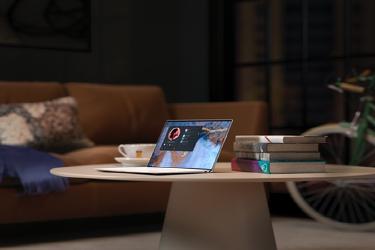
For many of us, remote work used to be a nice perk or something that your work allowed from time to time, but things have changed. It has become a new reality for a big part of the global workforce in the past year, and unless another catastrophic event happens, it’s here to stay. With that in mind, now that things are slowly going back to a more normal state, it’s time to take a step back and look at how we get work done in a remote setting. Here I’m not talking about the best software, the best mic, or the best camera setup; those things have been talked about to death already. We need to go deeper into more fundamental issues.
8h of work is a long time, but not if it’s broken into 30 pieces, then it’s moments, not time, and it’s hard to do hard work in multiple moments
Workflows, expectations, communication, loneliness, and organization have always been problematic in the workplace but a lot less prevalent. Now that everyone is remote, it made those issues more common and often harder to fix. It’s far from doom and gloom, though; there are solutions you can look into to help those situations. The other good news is that not all of them are hard to fix, sometimes realizing it’s an issue will be enough to start to work on improving it; expectations and communications are one of those areas.
Expectation and communication
When everyone is working remotely on their own, communication becomes one of the essential tools for getting work done correctly. That is especially true with teams that work globally across multiple timezones, but even if all your co-workers are nearby, they might not all work on the same schedule. That situation creates one of the biggest problems remote workers have, the lack of clear policies and expectations with their manager and team. On top of that, often people don’t communicate during the workdays, only at the start or the end; only 10% of teams share their status throughout the day, so chances are your team is not part of those who do.
What we found is that the single biggest barrier to being productive when you work from home is a lack of clear policies and expectations-especially around availability.
Those statistics are very concerning given the impact clear common expectation has on work and communication in a team. Has a remote worker, you can’t just rely on physical signs to know when someone is available or not, and others can’t do the same either for you. That’s the main reason why having common expectations is so important. If you don’t and leave it as is, it becomes harder to know when you or someone is supposed to be available. Without common expectations, communication between people also becomes a lot harder. If no one is communicating their status throughout the day, no one really knows what to expect from each other and when someone is available to answer questions. If you let it alone like that for long enough, default expectation will start to take form and will probably be different for each member; at that point, it also becomes a lot harder to change things.
We waste so much time not just on social networks and websites, but in trying to get people clear on what they need to do and have a mutual understanding.
The best solution here is to eliminate the root problem; you should ask or set clear expectations and communicate them. Communications become a lot more effective and productive when everyone knows what to expect from everyone else. Knowing that, you should ask your manager or team about the current expectations and policies, and if there’s none yet, what would be the best scenario? It would be shocking if there were no expectations; they are probably not written down or are implicit knowledge. In either case, often asking about it will make people realize and write them down. The idea is to communicate and commit to them instead of just having them float in the air. Once that’s done, you need to make sure to respect those boundaries. There are multiple ways to go about this: you could tell people your expected work hours every day during your morning meeting, or you could set your calendar with blocks where you’re available. Many tools also now have a way to set a schedule that tells the other person if you’re available or not. Once everyone settles in, you should be able to tell when someone is available or not at any time. That simple feature will bring back a sense of unity in the team and helps communications on top of making everyone feels more connected, which is the following problem.
Loneliness
Loneliness is another major problem or remote work and has been for as long as we had remote work. It is often the one thing people fear or hate about that type of work setup. There are multiple reasons for loneliness to set in when working remotely; some of them are psychological, some are evolutionary, and our current technology also causes some. It’s worth noting that it’s not about strength or character or a “thing you need to look into possibly at some point.” Loneliness is a genuine and dangerous problem, and it can have a tangible impact on your health, both mental and physical, and not just your work.
A former US general surgeon claims loneliness has the same health risks as smoking 15 cigarettes a day. While in the UK, workplace loneliness costs companies 2.5 billion a year.
Loneliness often comes from the lack of human contact for an extended period. The problem can also arise if the communication or connection is never meaningful or deep. Like the previous problem, if there’s a miss-match in expectations resulting in impossible communication, it can be challenging for a remote worker to feel included or connected to their team. From there, given how many hours we spend each day working if you cannot contact your co-worker in any form, that creates a long period of alone time. If you multiply those periods over weeks, you start to have some significant problems. The other thing at play here is with technology and our use of it in ways nature did not build our brain to handle. Many of us use chats and messaging applications to communicate as a replacement for in-person or face-to-face talk, but they’re not the same. Our brain was not made to communicate solely thru text; it needs to hear and see the other person. Instant messaging doesn’t create the same sort of bounding and exchange as seeing another human since it’s missing many of the cues we’re designed to look at. That can turn into a weird situation where you communicate more than ever but still feel lonely and isolated because what you require is human contact.
Despite the illusion of 24/7 connection, in reality, most workers feel isolated from their colleagues, their organization, and its leaders.
There are many possible solutions to those problems, but you need to talk about it before going on and trying anything if you feel like this affects you. Above everything else, if you feel very lonely because it can be so devastating, please tell someone who can help you, a manager, a co-worker, a friend, a counselor. Doing that will serve a dual purpose of getting you help and encouragements and connecting you with that person, helping reduce the loneliness. Another way you can prevent loneliness from setting in is to be more active with your contacts. When working remotely, it’s a lot harder to have a casual on-the-spot conversation, so instead, create that situation yourself. You can re-create the coffee machine conversation by opening a voice channel where anyone can join in and talk or listen to the conversation, for example. You could also set a small 30 minutes meeting with a colleague to talk about life or organize weekly lunch activities or board games night. Another possibility, when available, is to get out of the house to work. Working from a co-working space, a coffee shop, or a library can create those missing small talk situations on top of being around peoples while working. The one common thing with all of those solutions is to spend time around other humans, but that’s not always easy when you spent most of your time trying to keep track of conversation and plans built on the fly via email and chat.
Organization and workflows
The final big missing pieces of remote work and work, in general, are processes and workflow, especially around the organization of work. Work is often haphazardly planned on the spot during conversation back and forth. From there, people communicate endlessly to see if something is done or who’s working on what. That, in turn, means you need to always stay alert and listen for requests or answers to your questions, which makes complex work very difficult. When you couple that with the lack of clear expectations and the danger of chat communication for loneliness, it creates a disaster recipe.
The Hero complex - The busier you seem to be, the more you seem to be important.
Surprisingly, the organization is often something companies seem to leave up to the knowledge worker to figure out. A project gets planned to be done by date X, and it’s up to you to “get it done” by them before we move on to the next project. That sort of ad-hoc setup can somewhat work in an office since it’s easy to tap on someone’s shoulder and pull them in a meeting to figure things out. That sort of on the fly organization breaks down when there’s no more office or central place where everyone is. Even worst, it will dampen or even completely block some of the most significant advantages of remote working like asynchronous work, flexible schedule, and scalability. When you start to have people on a different schedule because of timezone or just different availability, it becomes pretty much impossible to figure out things on the fly. The results will be either blocking everything down to wait for everyone’s input or deciding on the fly with the currently available person. The others are then left to live with that decision, which is rarely a good way to go. In turn, because no one wants to be “blocking” or left behind, everyone will start to communicate a lot more and feel pressured to monitor all conversations to give their inputs constantly. In that situation, it becomes a lot harder to separate work and life or take time for meaningful dialogue with other peoples when you need to be looking 24/7 at your emails.
We overestimate accessibility; we often just need clarity in the process.
Here the solution is pretty straightforward, but it can be time-consuming. Like expectations earlier, any repeated workflows should be written down and followed instead of being done on the fly. Nothing that you do more than a couple of times or that will be done often over time should be left in implicit knowledge to be figured out ad-hoc. While pretty straight forward you will probably realize soon how many of those processes you need to write down for your job. That, in turn, requires a lot of effort and energy to put them down in written form, even though you will save that time each time that process is repeated. The other common blocker to this solution is simply the company culture. Going from a culture of ad-hoc everything to a process and workflows-based company will require time and investment from all company levels. It’s also not something you can do on your own, especially not as an employee. However, the thing you can do is start to create those processes for the things you have control over. Doing that will help you win back clarity and lower your stress and pressure, but it will also set an example and might start the company’s shift to this way of working.

